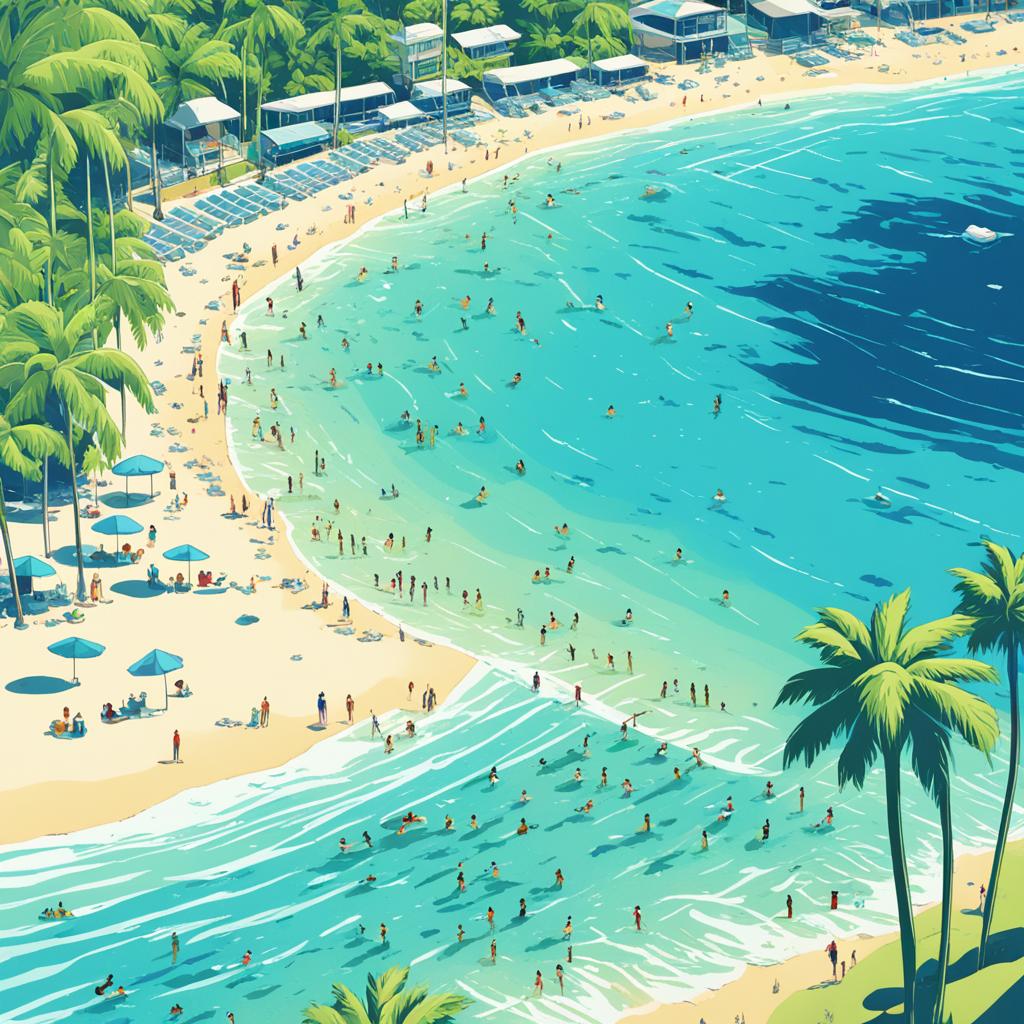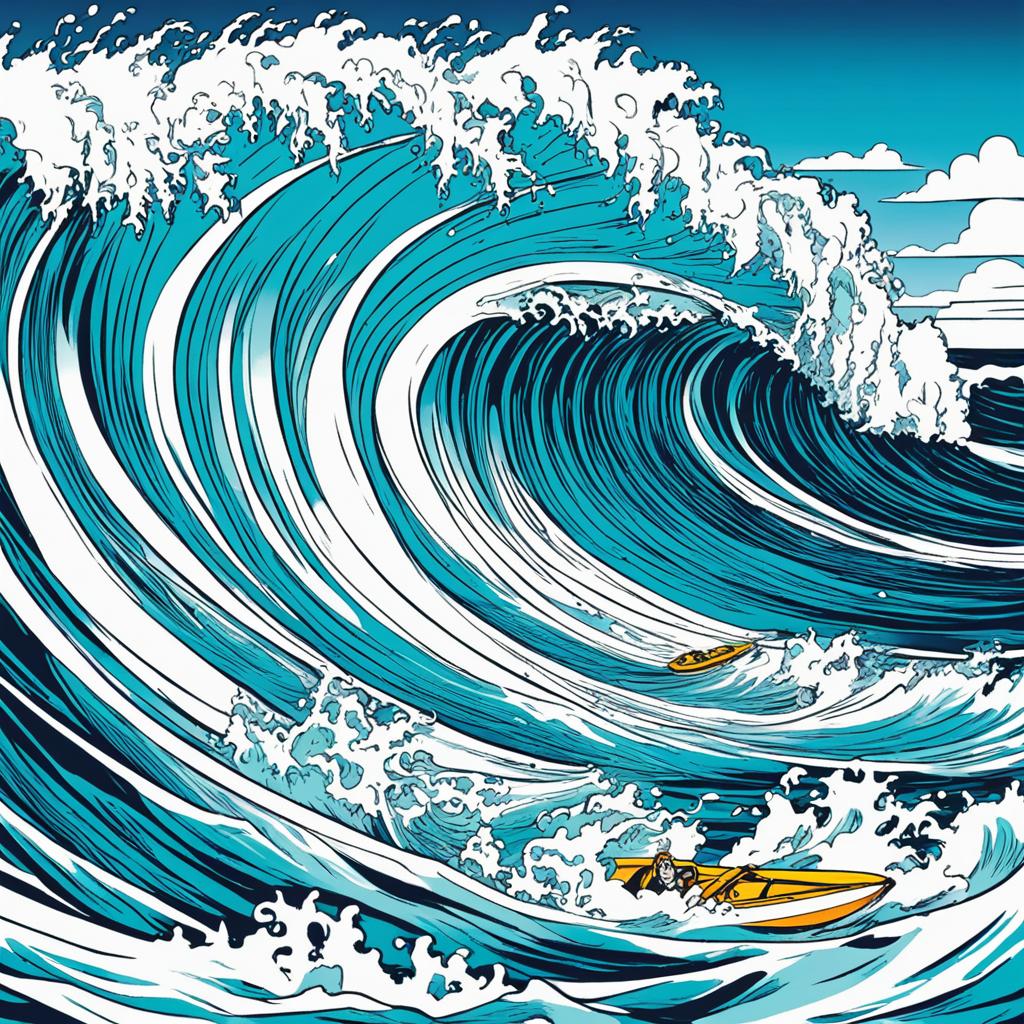When you think of Hawaii, you may envision pristine beaches, sparkling blue waters, and unforgettable adventures. But amidst the beauty and excitement, there lurks a hidden danger that may surprise you. Have you ever wondered how safe it really is for tourists in Hawaii? How many drowning incidents occur each year, and what measures are in place to protect visitors from such tragedies?
Well, the truth is that drowning incidents in Hawaii are a real concern, affecting both residents and tourists. The Department of Health in Hawaii has gathered data that sheds light on the severity of the problem. Brace yourself for the truth as we delve into the statistics and explore the measures taken to ensure tourist safety in Hawaii.
Magnitude of Drowning Incidents in Hawaii
Drownings in Hawaii are a grave concern, with the number of deaths increasing annually, particularly among residents of Hawaii County. From 2013 to 2017, Hawaii ranked second among all 50 states for resident drowning fatality rates, surpassed only by Alaska. Ocean drownings account for the majority (84%) of fatal incidents in Hawaii, making them a significant hazard that demands attention.
Snorkeling is the most common activity associated with ocean drownings in Hawaii, contributing to 27% of all incidents and 42% among non-residents. These statistics underline the need for improved safety measures and awareness for tourists engaging in ocean activities.
As the image reveals, ocean drownings are a major concern in Hawaii. They contribute significantly to the overall drowning fatality rates in the region, emphasizing the urgency to address this issue for both residents and tourists.
Long-Term Indicators and Objectives
The Department of Health in Hawaii has established specific objectives to reduce drowning-related mortality and morbidity rates among residents. The goal is to decrease the drowning-related mortality rate from 13.02/100,000 in 2013-2017 to 11.72/100,000 by 2018-2022. Similarly, the objective for the drowning-related morbidity rate is to decrease it from 40.02/100,000 in 2013-2017 to 36.02/100,000 by 2018-2022. These long-term indicators demonstrate the importance of implementing effective prevention strategies and safety measures to reduce the incidence of drownings in Hawaii.
Statistics on Drowning Incidents in Hawaii

Data from the Department of Health in Hawaii reveals that over a 5-year period, there were 332 drownings and near drownings in the state. The highest total occurred in 2011, with 79 drownings reported. These incidents involve both residents and non-residents, with residents accounting for 53% of the victims and non-residents making up the remaining 47%.
When examining the major activities leading to drownings, swimming and snorkeling emerge as the most prevalent, contributing to a significant number of incidents. Following closely behind are surfing and body-boarding. It is important to note that many drownings occur due to unknown activities or other factors, underscoring the need for further investigation and prevention efforts.
Drowning Incidents by Environment and Residence

When examining drowning incidents in Hawaii, it is important to consider the specific environments and locations where these tragedies occur. Saltwater drownings account for 78% of all drownings in Hawaii, making it the most prevalent environment for such incidents. Non-residents are particularly vulnerable to drowning in saltwater environments, accounting for 87% of these cases compared to 70% for residents.
In addition to saltwater, swimming pools and freshwater bodies also pose risks. These environments make up the majority of the remaining drownings in Hawaii. It is crucial for both residents and tourists to be aware of the potential dangers associated with swimming in these areas and to take appropriate safety precautions.
While saltwater and freshwater are the primary environments where drownings occur, there have been incidents in other locations as well. Some of these incidents have taken place in bathtubs or other lesser-known environments. It is essential to recognize these potential risks and ensure safety measures are in place to prevent drownings in all settings.
Furthermore, the distribution of drownings varies by county in Hawaii. Honolulu and Maui counties have reported the highest totals of drowning incidents, indicating the need for targeted safety measures in these areas. By understanding the specific environments and locations where the risk of drowning is higher, authorities and individuals can implement preventive strategies and reduce the number of drowning incidents.
Intrinsic Factors Contributing to Drownings in Hawaii

Autopsy records indicate that a significant number of drownings in Hawaii are influenced by intrinsic or personal factors. These factors play a crucial role in understanding the circumstances surrounding these tragic incidents. In particular, circulatory diseases and drug and alcohol-related incidents are prevalent contributors to drownings.
Circulatory diseases, such as heart conditions and high blood pressure, are intrinsic factors that contribute to almost half of all drownings in Hawaii. Victims aged 50 and older are particularly vulnerable to drowning incidents related to circulatory diseases.
Drug and alcohol-related incidents also play a significant role in drownings, especially among residents of Hawaii. Substance abuse can impair judgment, coordination, and swimming abilities, increasing the risk of accidents in the water. It is crucial to raise awareness about the dangers of drug and alcohol consumption in aquatic environments and promote responsible behavior.
While non-residents are less likely to have circulatory diseases as contributing factors, they can still be affected by intrinsic factors specific to their health conditions. Identifying and understanding these underlying factors can help identify high-risk individuals and implement targeted interventions to prevent drownings.
Intrinsic Factors Contributing to Drownings in Hawaii
Autopsy records indicate that a significant number of drownings in Hawaii are influenced by intrinsic or personal factors. These factors play a crucial role in understanding the circumstances surrounding these tragic incidents. In particular, circulatory diseases and drug and alcohol-related incidents are prevalent contributors to drownings.
| Contributing Factors | Prevalence |
|---|---|
| Circulatory diseases | Nearly half of all drownings |
| Drug and alcohol-related incidents | Prevalent among residents |
Circulatory diseases, such as heart conditions and high blood pressure, are intrinsic factors that contribute to almost half of all drownings in Hawaii. Victims aged 50 and older are particularly vulnerable to drowning incidents related to circulatory diseases.
Drug and alcohol-related incidents also play a significant role in drownings, especially among residents of Hawaii. Substance abuse can impair judgment, coordination, and swimming abilities, increasing the risk of accidents in the water. It is crucial to raise awareness about the dangers of drug and alcohol consumption in aquatic environments and promote responsible behavior.
While non-residents are less likely to have circulatory diseases as contributing factors, they can still be affected by intrinsic factors specific to their health conditions. Identifying and understanding these underlying factors can help identify high-risk individuals and implement targeted interventions to prevent drownings.
Safety Recommendations for Tourists in Hawaii
To ensure your safety while visiting the beautiful islands of Hawaii, it is crucial to follow ocean safety guidelines. Before engaging in any water activities, always check the weather and ocean conditions. This will help you make informed decisions and avoid potential dangers. Remember, safety should always be a top priority.
When participating in water activities, such as swimming or snorkeling, it is essential to wear appropriate safety gear. Life jackets can provide added security, especially if you are not a confident swimmer. They can offer buoyancy and peace of mind in case of any unexpected incidents.
For those planning to embark on a snorkeling adventure, it is vital to be knowledgeable about the potential risks associated with this activity. Currents can be strong, and equipment malfunctions can occur. Make sure to educate yourself about the area you will be snorkeling in and follow all safety guidelines provided by experienced instructors or local authorities.
While enjoying your time in Hawaii, it’s also important to be aware of swimming pool safety, especially if you have young children. Ensure that proper safety measures are in place, including pool fences, pool covers, and constant adult supervision. Taking these precautions can help prevent accidents and ensure a safe and enjoyable experience for everyone.
FAQ
Q: How many tourists drown in Hawaii each year?
A: According to data from the Department of Health in Hawaii, drownings are a significant concern for both residents and tourists in the state. On average, nearly 40 deaths per year are attributed to drowning, with non-residents accounting for 53% of the victims, bringing the average annual number of deaths to 83.
Q: What are the major activities associated with ocean drownings in Hawaii?
A: Snorkeling is the most common activity associated with ocean drownings in Hawaii, accounting for 27% of all incidents and 42% among non-residents.
Q: What are the long-term objectives for reducing drownings in Hawaii?
A: The Department of Health in Hawaii has set specific objectives to decrease drowning-related mortality and morbidity rates among residents. The SMART objective is to decrease the drowning-related mortality rate from 13.02/100,000 in 2013-2017 to 11.72/100,000 by 2018-2022. Similarly, the objective for the drowning-related morbidity rate is to decrease it from 40.02/100,000 in 2013-2017 to 36.02/100,000 by 2018-2022.
Q: What are the major activities leading to drownings in Hawaii?
A: Swimming and snorkeling are the most prevalent activities leading to drownings in Hawaii, followed by surfing and body-boarding.
Q: Where do most drownings occur in Hawaii?
A: The majority (84%) of fatal drownings in Hawaii occur in the ocean, with saltwater drownings accounting for 78% of all drownings. Honolulu and Maui counties have the highest totals of drowning incidents.
Q: What are the intrinsic factors contributing to drownings in Hawaii?
A: Intrinsic factors such as circulatory diseases contribute to nearly half of the drownings in Hawaii, particularly among victims aged 50 and older. Drug and alcohol-related incidents are also prevalent among residents.
Q: What safety recommendations should tourists follow in Hawaii?
A: To ensure the safety of tourists visiting Hawaii, it is essential to follow ocean safety guidelines. This includes checking weather and ocean conditions before engaging in water activities, wearing appropriate safety gear such as life jackets, and avoiding solo activities. Snorkelers should be knowledgeable about the potential risks associated with this activity, such as currents and equipment malfunctions. Additionally, swimming pool safety measures should be in place, especially for young children, to prevent drownings in these environments.
